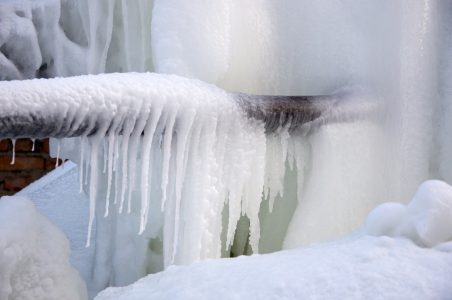Guidance for Avoiding Frozen Pipes in Winter: Specialist Insights
Guidance for Avoiding Frozen Pipes in Winter: Specialist Insights
Blog Article
Each person may have his or her own way of thinking on the subject of How to prepare your home plumbing for winter weather.

Winter can ruin your pipes, particularly by freezing pipelines. Here's how to avoid it from taking place and what to do if it does.
Intro
As temperature levels decline, the risk of icy pipes rises, possibly bring about expensive fixings and water damages. Comprehending how to avoid frozen pipes is important for homeowners in cool climates.
Recognizing Frozen Pipes
What triggers pipelines to freeze?
Pipelines ice up when exposed to temperatures listed below 32 ° F (0 ° C) for expanded periods. As water inside the pipes ices up, it increases, putting pressure on the pipeline wall surfaces and possibly triggering them to break.
Threats and damages
Frozen pipes can result in supply of water disturbances, building damages, and pricey repair work. Ruptured pipelines can flood homes and trigger considerable structural damage.
Indicators of Frozen Water Lines
Identifying icy pipes early can prevent them from bursting.
How to identify icy pipelines
Look for decreased water circulation from faucets, uncommon odors or sounds from pipelines, and noticeable frost on subjected pipelines.
Prevention Tips
Shielding prone pipelines
Wrap pipes in insulation sleeves or utilize warm tape to shield them from freezing temperature levels. Concentrate on pipelines in unheated or exterior locations of the home.
Heating methods
Maintain interior rooms adequately warmed, particularly areas with pipes. Open cabinet doors to permit cozy air to flow around pipes under sinks.
Protecting Outdoor Pipes
Garden hose pipes and outdoor taps
Separate and drain pipes garden hoses before winter. Set up frost-proof faucets or cover outdoor faucets with insulated caps.
What to Do If Your Pipes Freeze
Immediate actions to take
If you believe icy pipes, keep faucets open to relieve stress as the ice melts. Make use of a hairdryer or towels soaked in hot water to thaw pipelines slowly.
Long-Term Solutions
Architectural modifications
Consider rerouting pipelines far from exterior walls or unheated locations. Include added insulation to attics, basements, and crawl spaces.
Upgrading insulation
Invest in top quality insulation for pipelines, attics, and walls. Proper insulation helps preserve constant temperatures and decreases the risk of icy pipes.
Verdict
Protecting against icy pipelines needs proactive procedures and quick feedbacks. By comprehending the reasons, indications, and safety nets, home owners can safeguard their pipes throughout cold weather.
6 Proven Ways to Prevent Frozen Pipes and Protect Your Home
Disconnect and Drain Garden Hoses
Before winter arrives, start by disconnecting your garden hoses and draining any remaining water. Close the shut-off valves that supply outdoor hose bibs and leave the outdoor faucet open to allow any residual water to drain. For extra protection, consider using faucet covers throughout the colder months. It’s also important to drain water from any sprinkler supply lines following the manufacturer’s directions.
Insulate Exposed Pipes
Insulating your pipes is an effective way to prevent freezing. Pipe insulation is readily available at home improvement stores and is relatively inexpensive. Pay close attention to pipes in unheated areas such as the attic, basement, crawl spaces, or garage. Apply foam insulation generously to create a buffer against the cold. You can also wrap your pipes in heat tape or thermostat-controlled heat cables for added warmth.
Seal Air Leaks
Inspect your home for any cracks or openings that could let in cold air. Seal any holes around the piping in interior or exterior walls, as well as the sill plates where your home rests on its foundation. Additionally, make sure to keep your garage door closed unless you’re entering or exiting. Leaving it open creates a significant air leak that can lead to frozen pipes.
Allow Warm Air Circulation
During cold snaps, it’s essential to allow warm air to circulate evenly throughout your home. Leave interior doors ajar to promote better airflow. Open kitchen and bathroom cabinets to help distribute heat consistently around the rooms. If you have small children or pets, be sure to remove any household chemicals or potentially harmful cleaners from open cabinets for safety.
Let Faucets Drip
A small trickle of water can make a big difference in preventing ice formation inside your pipes. When temperatures drop significantly, start a drip of water from all faucets served by exposed pipes. This continuous flow helps prevent the water from freezing. Additionally, running a few faucets slightly can relieve pressure inside the pipes, reducing the chances of a rupture if the water inside does freeze.
https://choateshvac.com/6-proven-ways-to-prevent-frozen-pipes-and-protect-your-home/

I have been very eager about Winter Plumbing Precautions: Preventing Frozen Pipes and I really hope you liked our blog posting. So long as you liked our blog posting plz make sure you remember to pass it around. Thank-you for going through it.
Book Now! Report this page